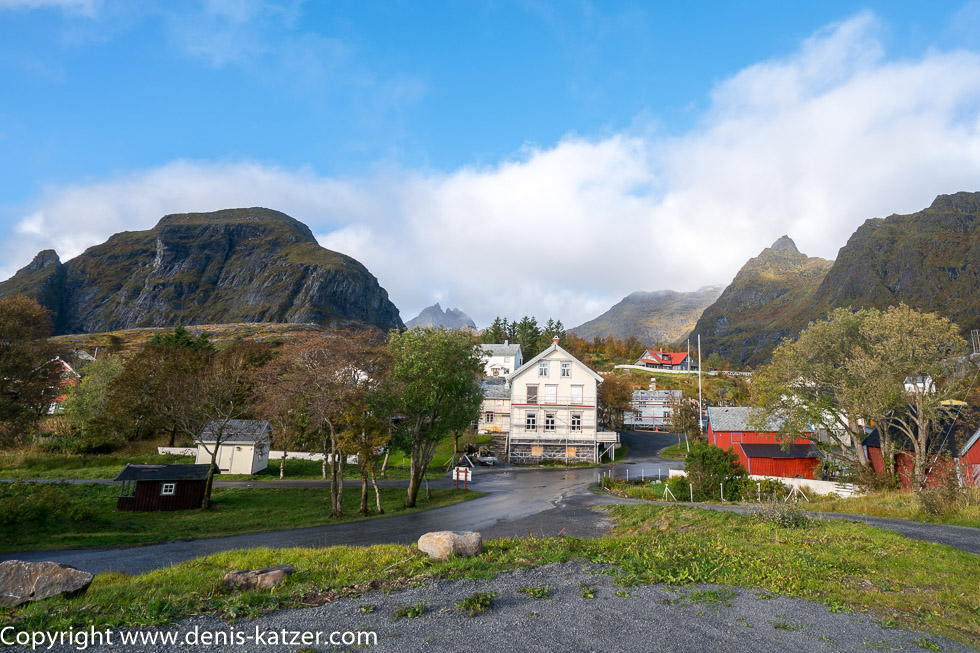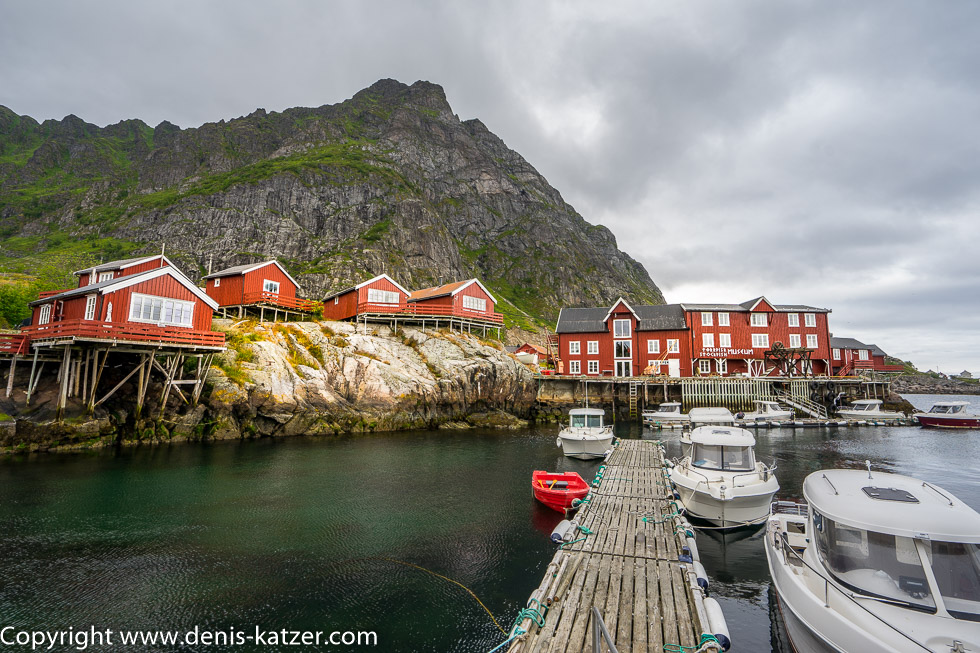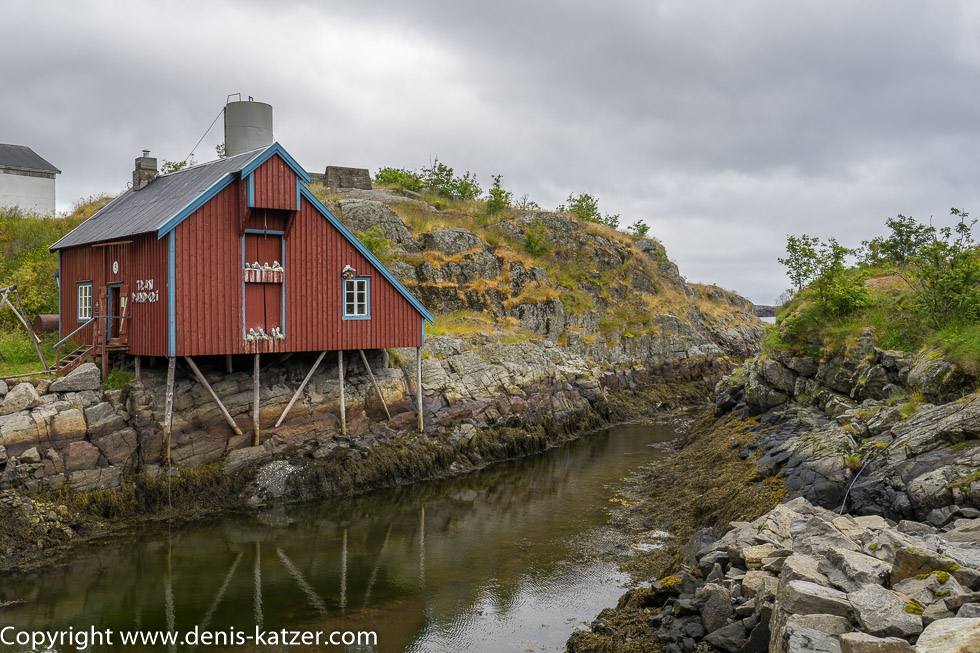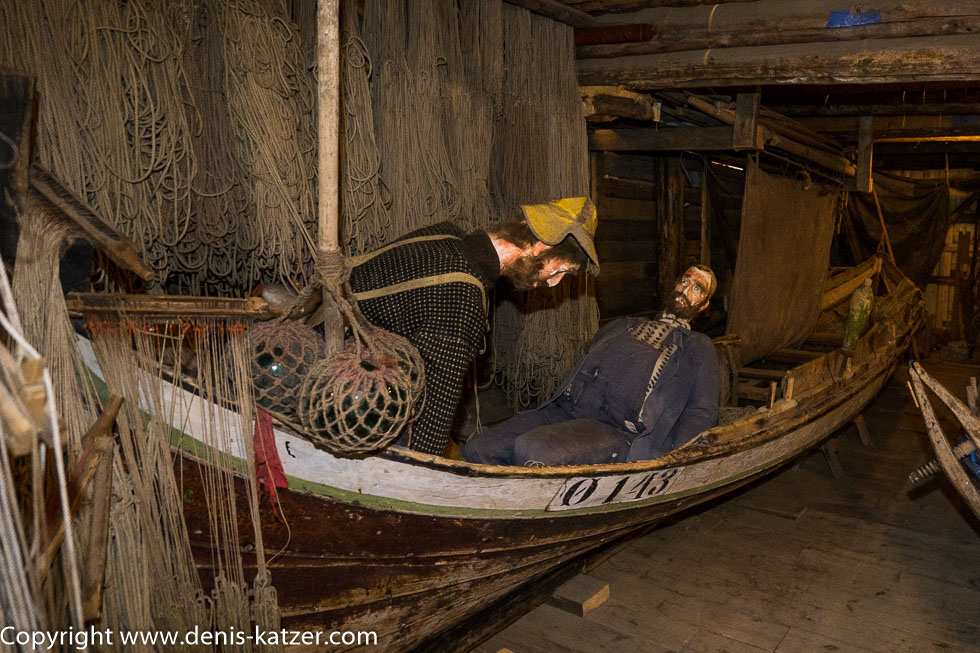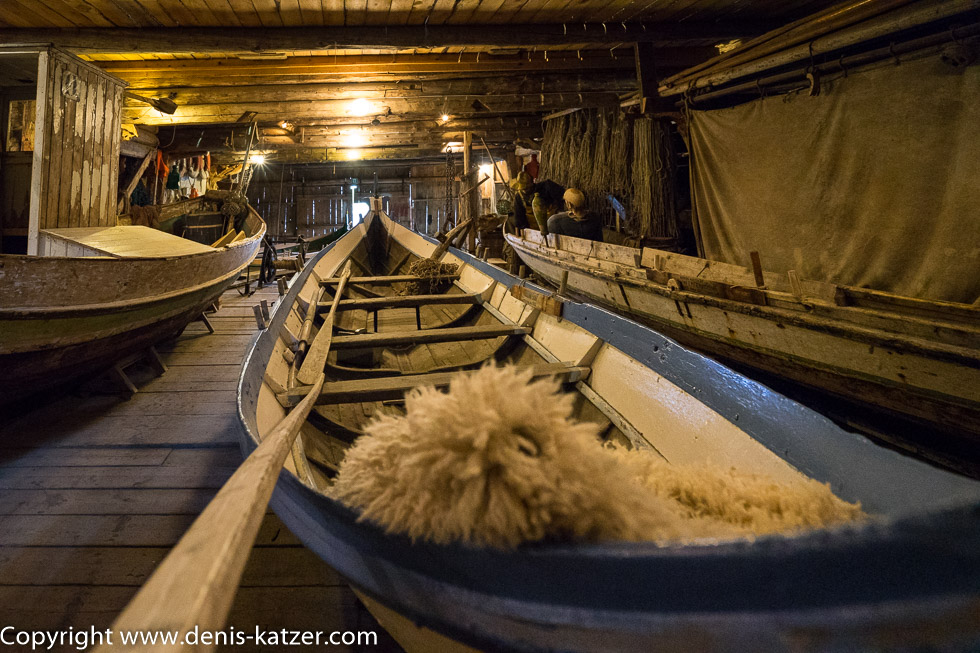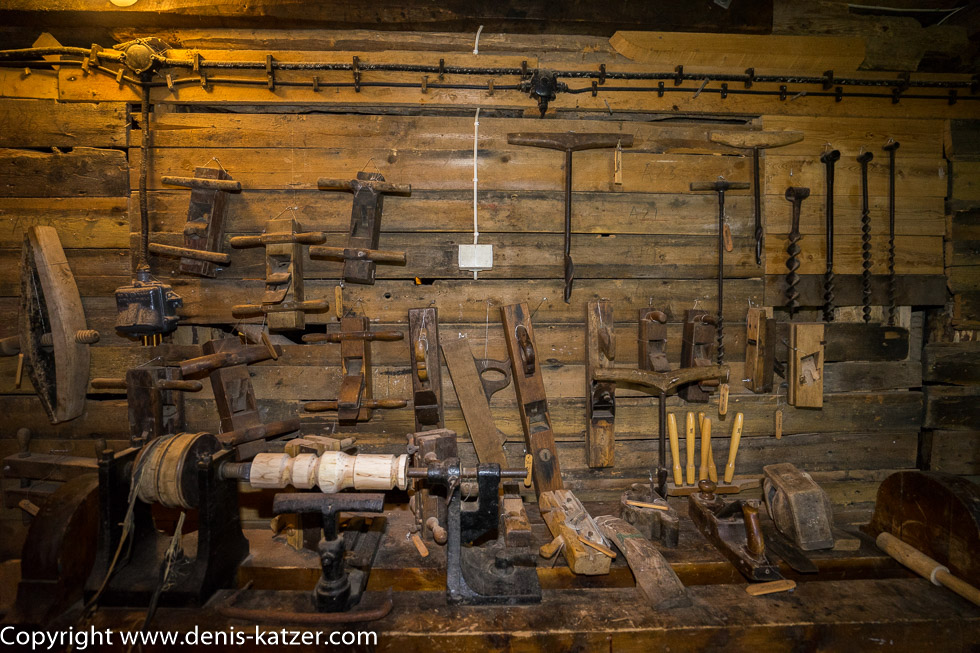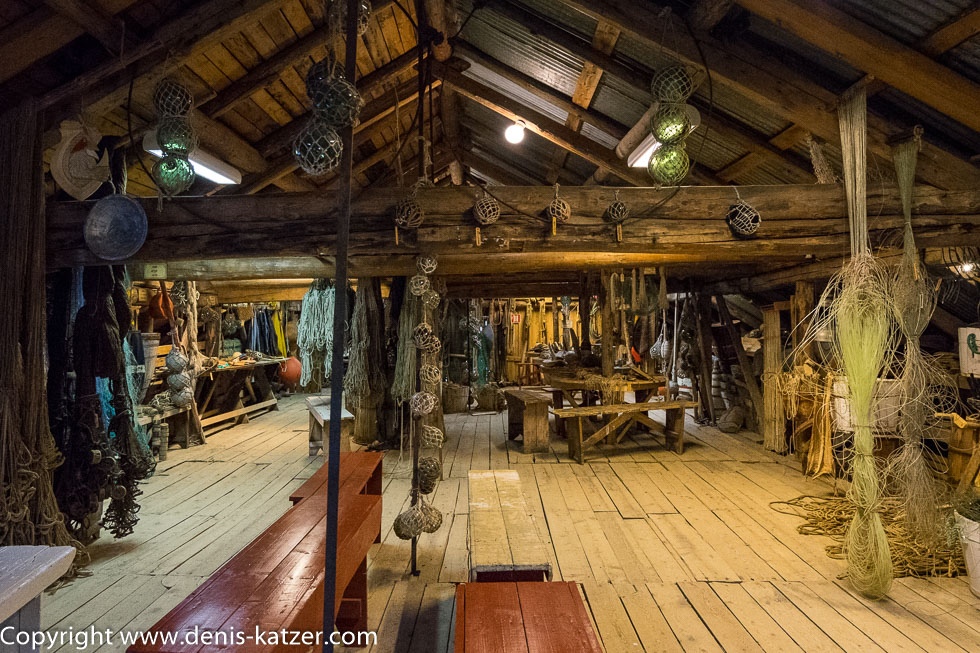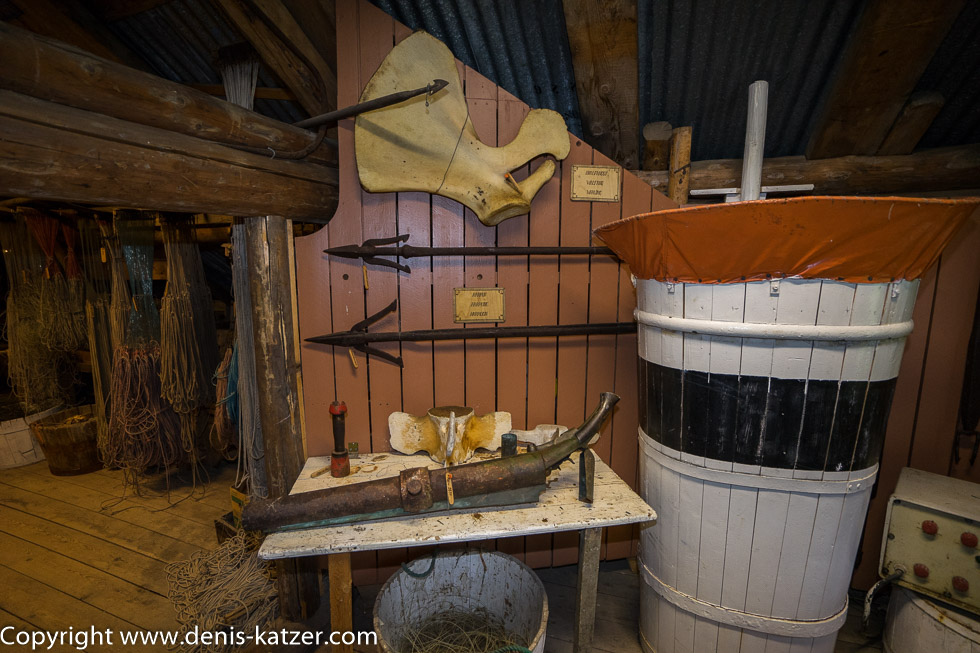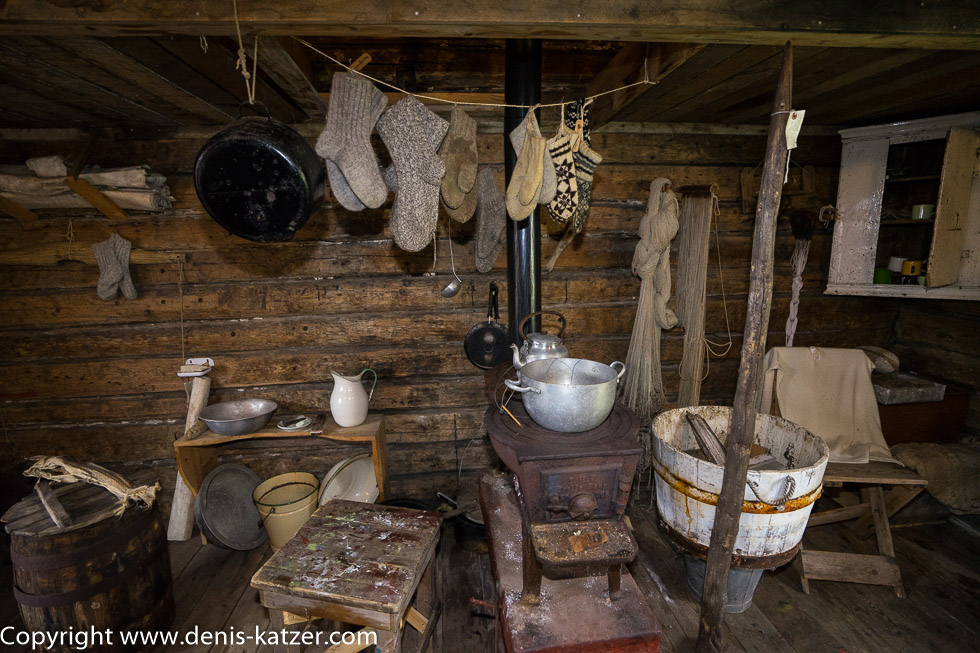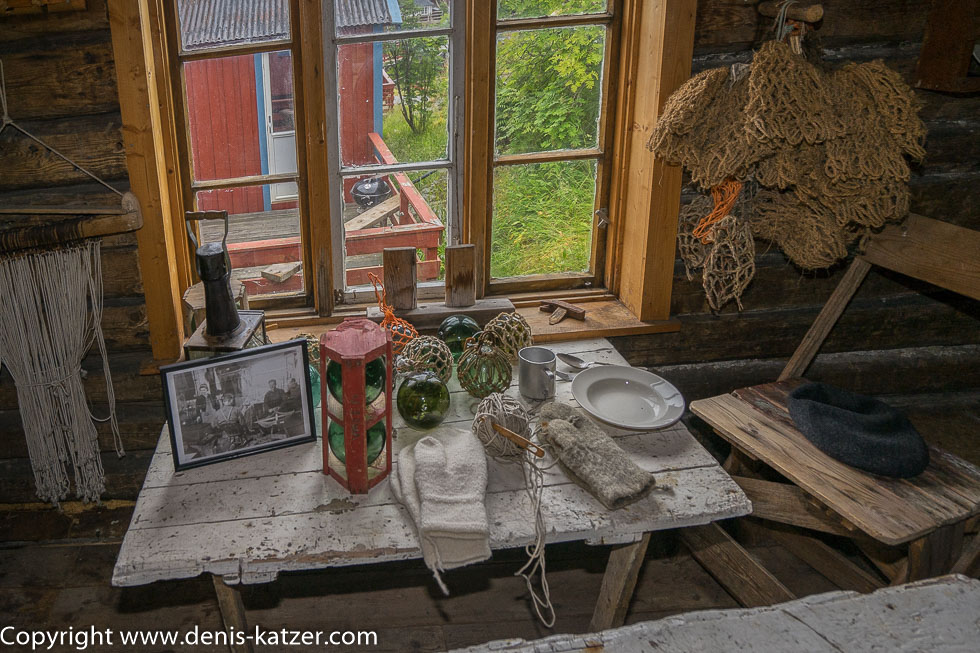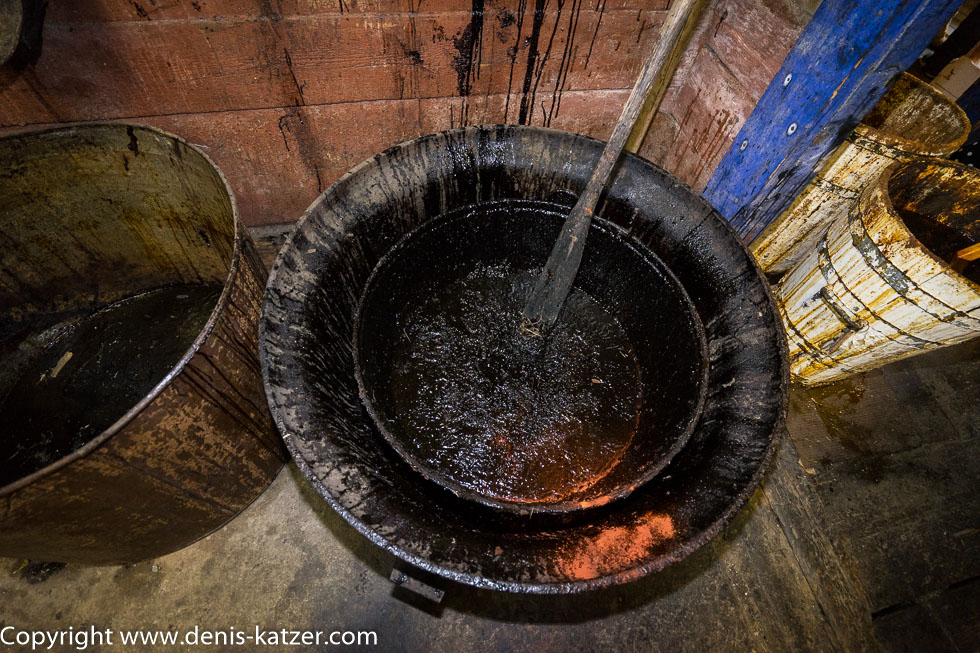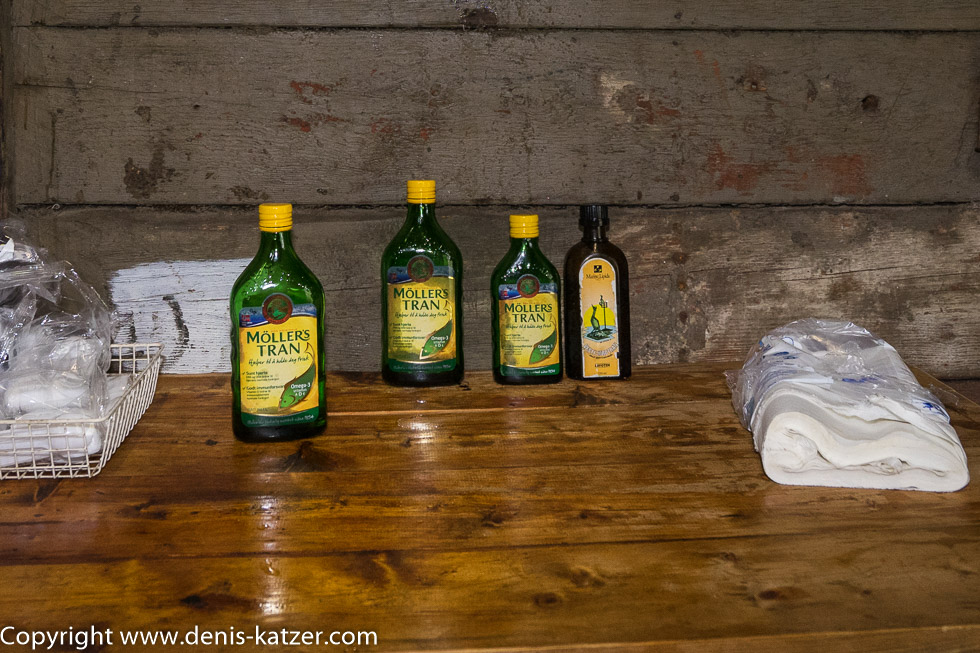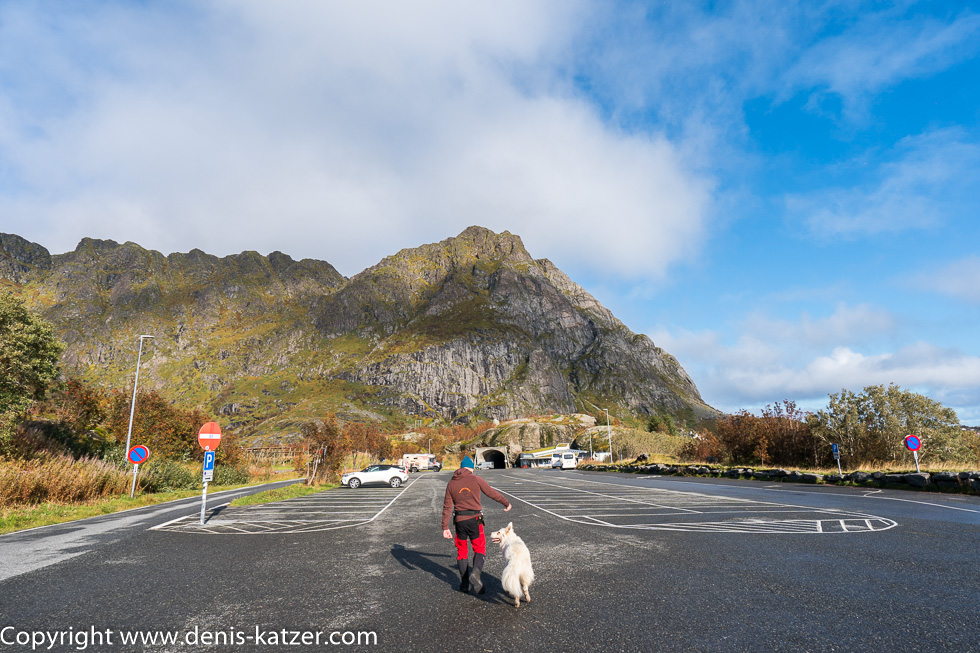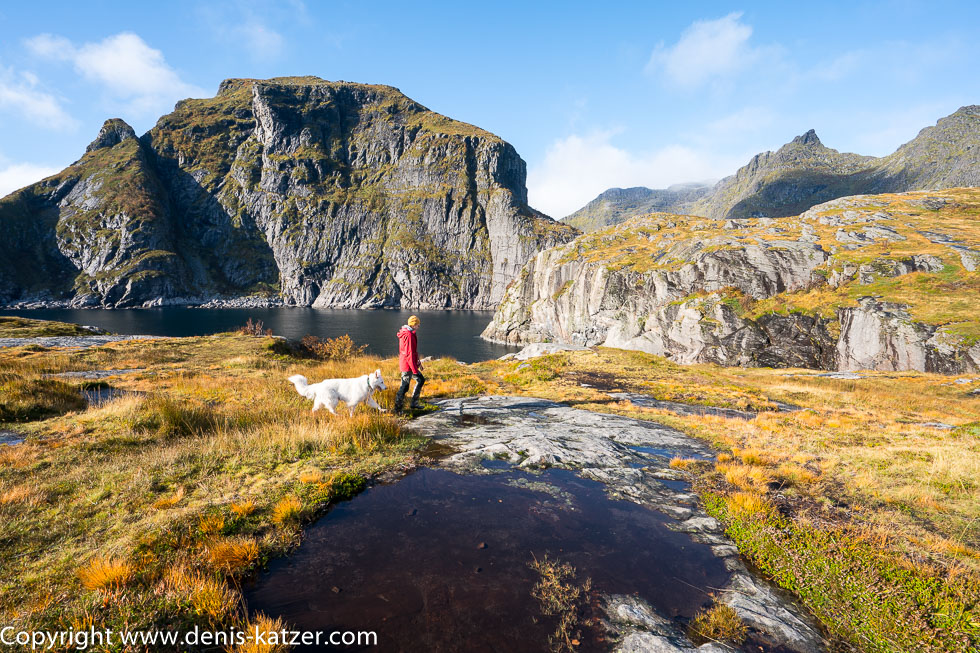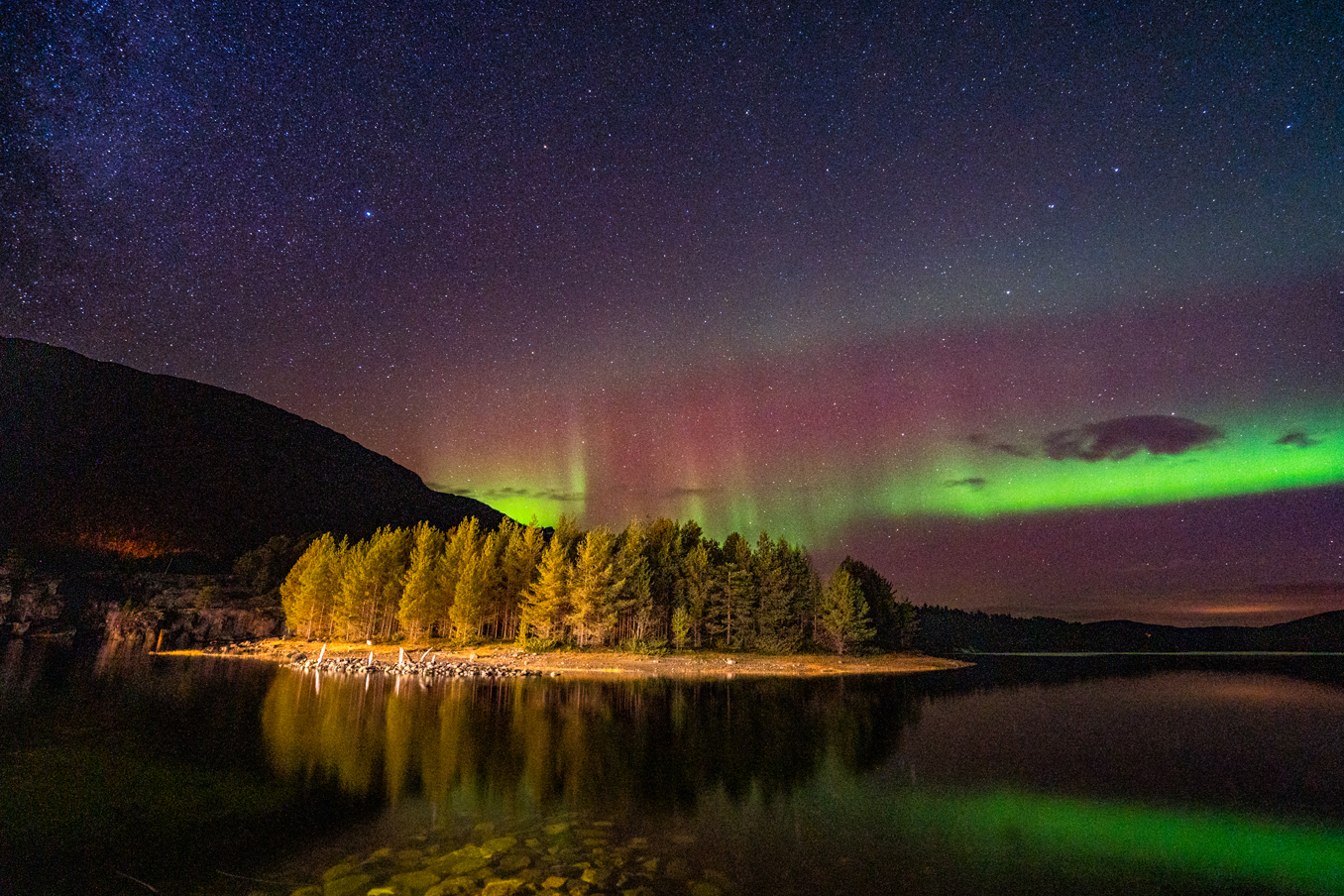
Breath of the past – enslaved fishermen
N 67°52'47.9'' E 012°58'40.9''
Date:
24.09.2020 to 25.09.2020
Day: 053 – 054
Country:
Norway
Location:
Å i Lofoten
Total kilometers:
5003 km
Sunrise:
06:49 h to 06:53 h
Sunset:
7:11 pm to 7:07 pm
Temperature day max:
8°
Night temperature min:
5°
Gusts of wind
100 km/h
(Photos of the diary entry can be found at the end of the text).
Click here for the podcasts!
Link to the current itinerary
(For more posts click on one of the flags in the map)
After a restless night, we are woken by the swaying of our terra and the rain pelting down on us. “The wind is still there?” says Tanja. “According to the weather forecast, it’s supposed to get better the day after tomorrow. I would suggest staying here until then and working on the texts and pictures.” “That’s a good idea. That way we can sit out this period of bad weather and then explore Lofoten in better weather,” she replies.
In the afternoon, I want to take Ajaci to the small village of “Å i Lofoten”, or “Å” for short, which nestles up against the sea below the large parking lot and is now mainly a fishing village museum. The moment I open the cabin door, a strong gust of wind blows across the pitch, tears at the door and almost throws me out of the cabin. “Oouuhh!” I shout in horror, clinging to a handle at the last moment. “Well, I was lucky,” I say to Ajaci, who jumps out of the cabin behind me as if nothing had happened. Arriving in “Å”, I get the impression that the hamlet is completely deserted at this time of year. According to my research, however, around 100 inhabitants are said to live here. But where are they? The bakery where we bought delicious, fresh bread last year is deserted. There are no signs on the road, the small model boats on the lawn in front of the supermarket have apparently been cleared away and the restaurant is closed. The atmosphere is strange, almost a bit spooky. When the door to the small supermarket opens, I’m terrified. “I’m holding down the fort here. The few people who live here need something to eat. Boring? No, I’m not bored. I love the solitude and the long, dark winter nights,” says the man who is one of the few people holding down the fort here. I walk on through the village with its 23 buildings that are 150 years old. A gust of wind blows into the village. The aged boards of one of the old huts creak as if the fishermen who once lived here were groaning loudly under the hard work. I shudder a little. I walk on slowly, inspecting more fishermen’s huts and remembering that the early settlers on Lofoten were already fishing 6000 years ago. Finds today prove that they were already using net sinkers and fishing hooks made of bone and horn. I think about what it must have looked like here a few hundred years ago. How several fishermen were crammed into such a tiny hut.
In terms of rich fishing grounds, this region is blessed by nature, because from January to April, large shoals of cod (Norwegian Arctic cod) migrate here from the north to spawn. One reason for this is that the first medieval town in northern Norway, Vágar, developed 1100 years ago. Word of the abundance of fish spread quickly, so that during the season up to 30,000 fishermen sailed or rowed to this region from all over northern Norway in their simple Nordland boats (a traditional type of open boat that was built for fishing in the northern Norwegian provinces of Nordland, Troms and Finnmark until the end of the 19th century).
I look through the cracks in the boards of a barn and recognize a few of the old, small Norwegian Nordland boats. Oars, ropes, nets, everything that made up the hard life of the fishermen lie around or hang on the wooden walls, aged by the ravages of time. The life of a fisherman was extremely arduous and despite large catches, it was usually just enough to survive. The reason for this was that they had to rent small huts at inflated prices, which were allocated to them by the “Dorµerren”, who were also known as “Nessekonger” (i.e. “large merchants”). They were the owners of the huts and the land on which they were built and built their wealth on the backs of the fishermen. Until two generations ago, the “Fish King” owned the entire village of Å. His grandson usually only comes to Å in the summer months. He spends the rest of the year in Oslo. Today, most of the village and the nearby freshwater lake belong to the Johan B. Larsen family and their descendants. As a result, individual fishermen have not had the chance to acquire their own land to this day. Only the landowners had the right to buy the fish from the enslaved fishermen at their own asking price. After being caught, the fish was gutted, headed and air-dried. The resulting stockfish was sold by the “Nessekongers” to Bergen, 1,500 km away. From there it was sold all over Europe. Stockfish was an important export product from which Norway earned large revenues, as it was used to supply ship crews and armies of soldiers on a massive scale at the time. It played a decisive role in western world politics, because without sufficient food for the ship’s crew, the discovery of the world would not have been possible. Supplying the crew with non-perishable food was of elementary importance. During the time of the rediscovery and exploration of America from 1492 onwards, the long-established tradition of preserving food with air and salt was used to feed the crew with dried fish and cured meat on months-long sea voyages. To prevent scurvy, the main cause of death among sailors, the crew was also prescribed sauerkraut preserved in barrels, which contained vitamin C. Stockfish, which became better known through seafaring, also found its way to the mainland in the Middle Ages, where fish was not very common as it could not be transported before. So it was that stockfish was the most common foodstuff at sea or on land at the time, connecting the small fishing villages in Lofoten with the wider world out there. Because cod stocks have been decimated by overfishing in recent decades, the classic stockfish has become relatively expensive and has largely lost its reputation as a “poor man’s food”.
The wind makes me shiver at just 6 degrees. I look at my watch and realize that I’ve been wandering around here for an hour now. Ajaci, who is walking nicely beside me, looks at me. “What do you want? Shall we go back to Tanja?” “Iiiuuhhii!” he replies, howling. “All right, let’s take a look at a few more of the little houses and the larger building there,” I reply. Trying my luck, I push down the worn door handle. “It’s open,” I say in surprise. We step cautiously into the dark interior. It actually smells a bit like fish, as if someone is still alive here. Wool gloves, an enamel plate, cup and spoon lie on a low table made of simple boards. Fist-sized glass balls, sewn into a coarse net made of hemp rope, lie next to it. “Obviously these are swimmers who should be holding fishing nets on the surface of the water.” it goes through my head. An old picture frame is also on the table. It frames an old black and white photograph. It shows men mending nets and a woman working on the small cannon stove. “This is how they used to live here,” I say reverently. As if Ajaci understands me, he pricks up his ears and looks at me from the side with his big eyes. Dull daylight filters through the hut’s only window and falls on a washing line on which knitted woolen gloves and socks are hanging. Dried fish must have been stored in a simple wooden barrel. My gaze falls on a round washtub, tin buckets and wooden chests covered in tin. Each of these chests contained a man’s entire belongings. Then I discover what is most likely a bed. It’s so short that you can’t stretch out. I have read that such beds were shared by two fishermen, so they had to sleep sitting up. Many of the fishermen stayed here all year round. Either they didn’t have the money to travel home or they didn’t want to make the long, arduous journey. Either way, they had to pay the rent for their simple accommodation, which was so scarce at the time that up to twelve men had to share such a small dwelling, sometimes with four bunk beds. “Unbelievable,” I think and realize how my hair is standing on end. Yellow and red oilskins hang in the anteroom. The waterproof protective clothing shows that it can’t have been too long ago when the last fishermen lived here. The tradition of renting such tiny fishing huts during the season is at least 1000 years old, but no one today would want to live in such simple conditions. Today, modern technology and civilization provide every Norwegian fisherman with a warm, comfortable modern home. However, I’m not sure whether they are still being fleeced by cunning and enterprising merchants. On the way back, I stop by the old post office and the run-down cod liver oil factory, which still smells terribly of old fish oil. As far as I know, production was only discontinued a few decades ago. However, the well-known Möller’s Omega-3 cod liver oil, which has been produced since 1854, is still manufactured in Norway and sold in many supermarkets.
“We’re back,” I say, stepping back into the pleasant warmth of the Terra after my excursion. “But you’ve been away for a long time?” wonders Tanja. “I walked around the town a bit. It’s all deserted. One of the huts was open. Ajaci and I went inside and to be honest, it was a bit scary in there. I had the feeling that the walls were talking to me and telling me about the suffering of the fishermen who lost their lives there after working so hard for so long.” “Yes, I know it’s empty. I took Ajaci for a walk around the village this morning,” Tanja replies. Over dinner, we talk about the rest of our trip. “Do you think we can see the Northern Lights in Lofoten?” asks Tanja. “We are in the north. So it should be possible. However, the prerequisite is a cloudless sky. According to the weather forecast, tomorrow should be good weather. Maybe we’ll be lucky tomorrow. But we should keep driving. I don’t think this place is good for aurora spotting,” I reply. “It’s fine with me if we drive on. It’s nice here, but I’m sure there are better places.”…
